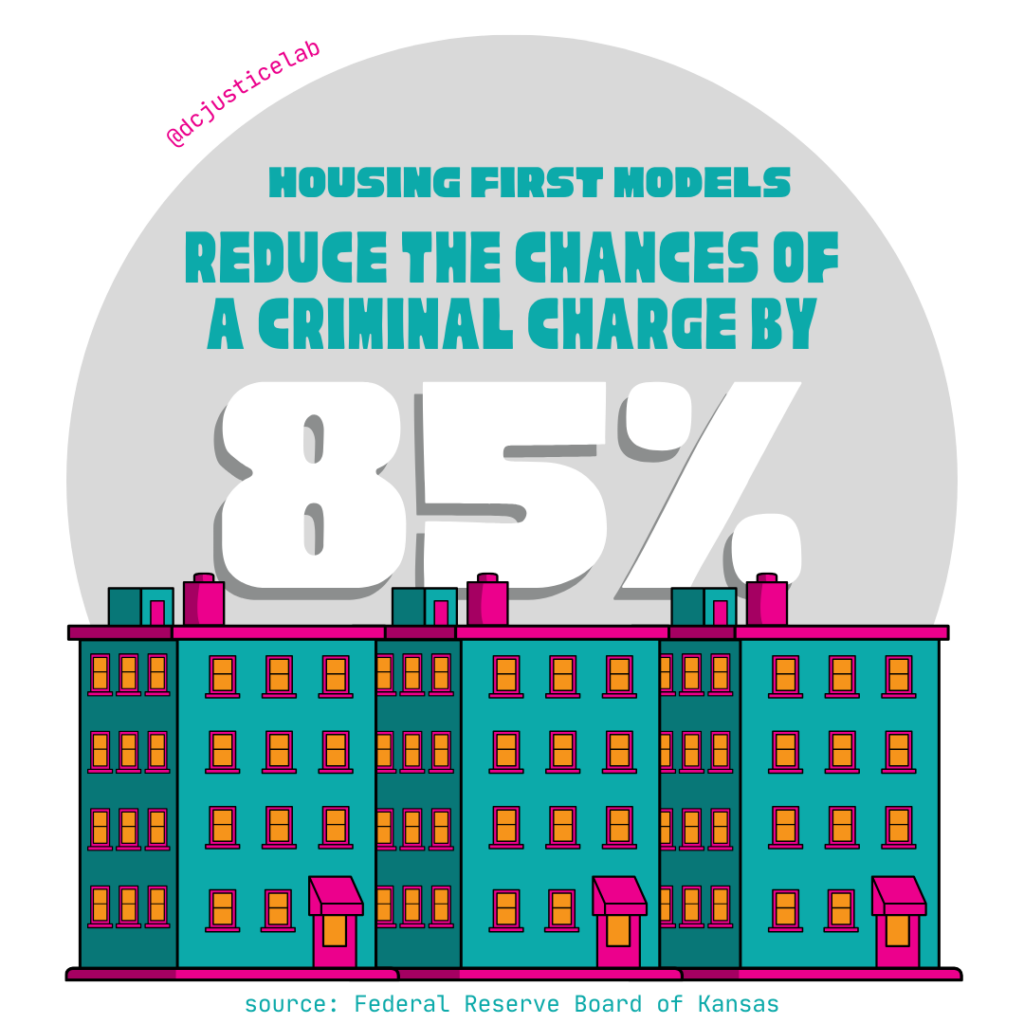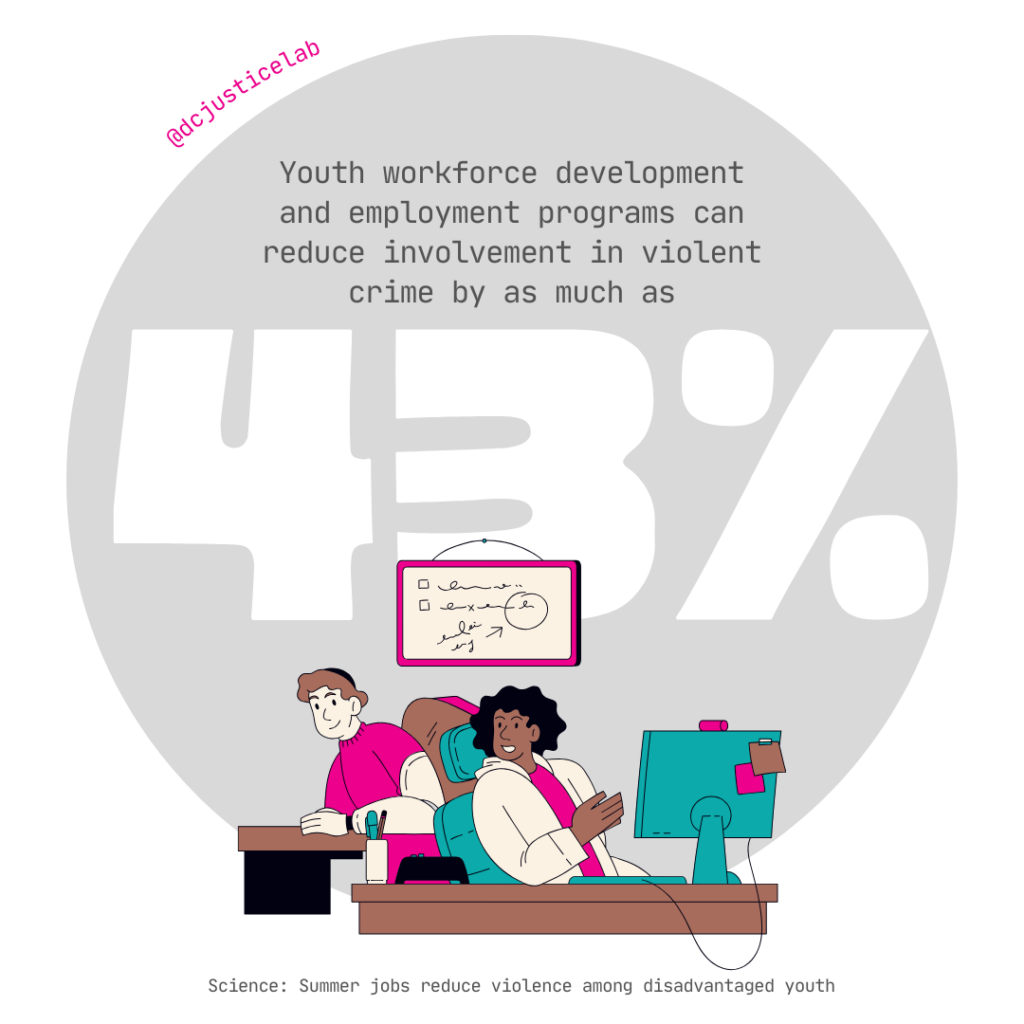
Prevention
The current system of prosecution, punishment, and policing isn’t preventing violence.
Too many DC residents experience unacceptable levels of violence. But when violence erupts, it almost exclusively impacts Black residents. About 95 percent of victims and suspects in homicides and 94 percent of victims and suspects in nonfatal shootings are Black. Even these high rates of violence understate the scale of the safety gap— half of all violent crimes are not reported, which means most of the violence Black residents experience isn’t counted and isn’t addressed. You cannot receive victims’ compensation in DC unless you report a crime. If you averaged out what DC paid out in victims’ compensation over a year for every violent crime victim, it was about $1,900 – just a little more than the cost of a new cellphone as someone pays for hospital bills, housing relocation, and mental health care.
One driver of the huge disparities in how Black residents experience violence is the much more significant gaps between what Black and white residents earn, their household wealth, and their access to health care, education, housing, jobs, recreation, and treatment – the kinds of protective factors that make it less likely that anyone will experience violence.
Protective Factors
For every dollar of white family income, African Americans earned 62 cents in 2021. Black unemployment rate in DC is 7 times that of whites– the worst disparity in the nation.
One out of five Black residents experience food insecurity.
Eighty-two percent of White students were proficient in reading, compared with 23 percent of Black students.
In DC, where 45 percent of the population is Black, nearly 83 percent of individuals experiencing homelessness are Black.
effective prevention requires:
Collaboration between government, law enforcement, healthcare systems, social services, and nonprofit, community-based organizations.
Those most impacted and at risk of violence must drive the development of policies–particularly young people, people with past convictions, people experiencing a mental health or substance use crisis, and crime survivors.
Services are delivered primarily outside the justice system, which can include everything from more daycare centers to vans that provide treatment services to a neighborhood or processes for young people to resolve behavior amongst themselves without police.
There is a role for prevention targeting people at risk of violence that may be delivered through the justice system, but that should be a small piece of how we stop violence from occurring. Prevention can largely be delivered by community-based nonprofits. National experts in working with police agencies on targeted enforcement underscore this by emphasizing, “police violence is state violence….the state’s coercive capacity should be welcome in the eyes of the public, do as little harm as possible, and give communities the protections they want in the ways that they want.”




